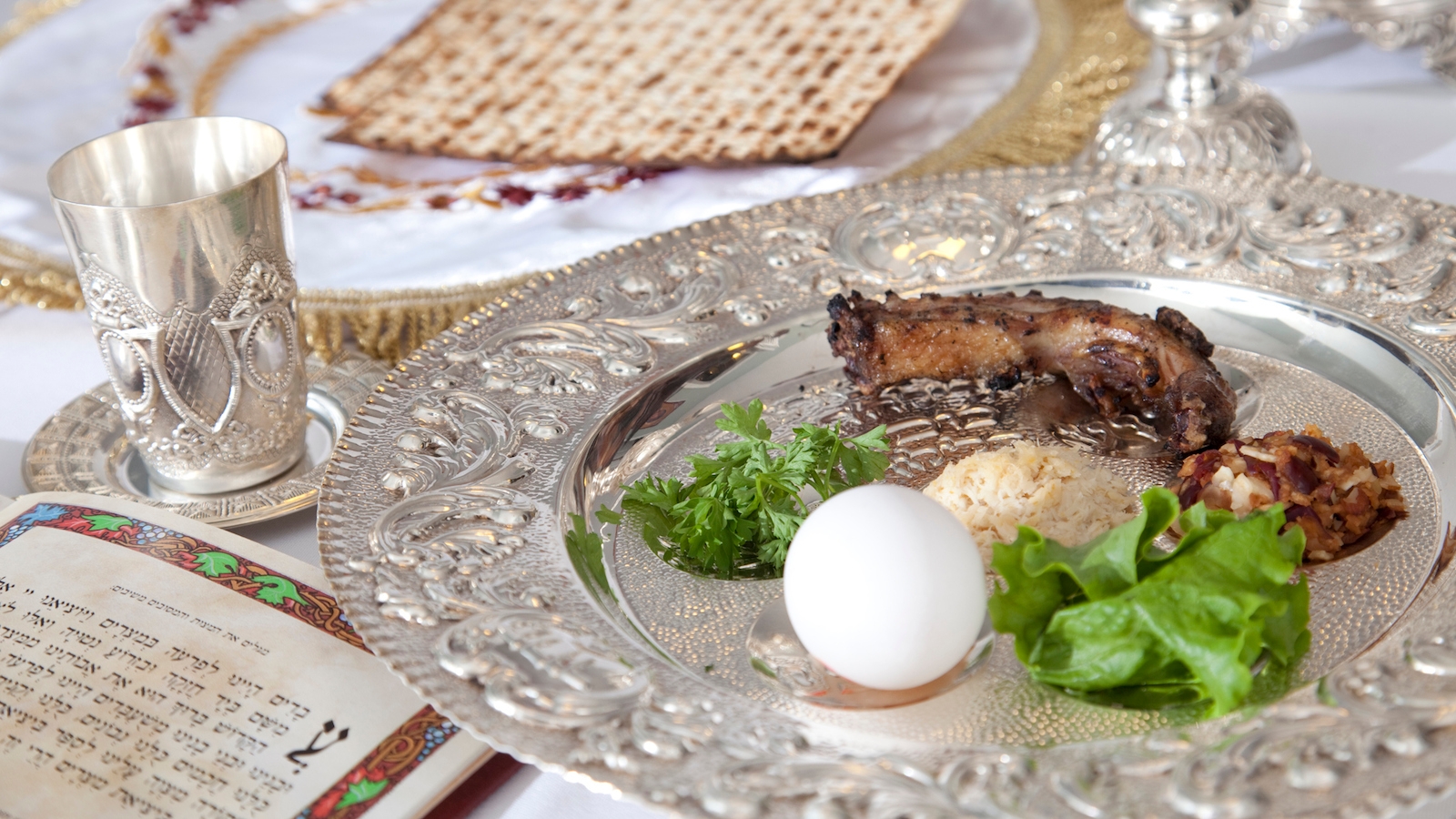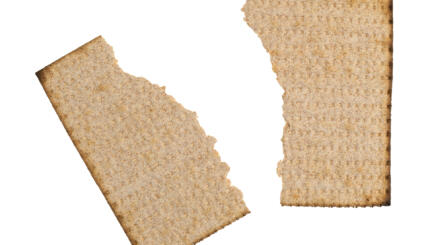Passover is one of the most important Jewish festivals of the year, and its high point is the seder. Experiencing this wonderful Jewish meal and interactive “happening” is to live through all the varied themes of the Passover festival.
The most obvious theme of the festival is redemption. In the Exodus story, which Jews are commanded to tell their children every year on Passover, the Jews were redeemed physically from slavery. While Pesach (the Hebrew word for Passover) is “z’man heyruteinu,” the season of our freedom, it is also a festival that speaks of spiritual redemption. Jews were freed from mental as well as physical slavery. It was as a physically and spiritually free people that the Jewish nation prepared to receive the Torah on Mount Sinai.
The notion of spiritual redemption is in part demonstrated by the fundamental Jewish idea that in every generation every individual is obliged to view him or herself as though he or she had actually gone forth from Egypt. Egypt is “Mitzraim” in Hebrew. It stems from the root “tzar,” which means narrow or constrained. In order to leave Egypt, each individual must break out of personal narrowness, becoming free to achieve his full spiritual potential. Another explanation of the root “tzar” is calamity. In this view, “Mitzraim” represents the country of calamities that befall the Jews.
The seder includes many allusions to a future messianic redemption. One of the clearest symbols of the presence and hope of future redemption is the Cup of Elijah that is placed on every seder table. Contained within the salvation from Egypt are the seeds of future redemption, as the Torah states, “This same night is a night of watching unto the Lord for all the children of Israel throughout their generations” (Exodus 12:42).
With your help, My Jewish Learning can provide endless opportunities for learning, connection and discovery.
An illustration of the coexistence of past and future redemption at the seder is the unusual way of reciting Hallel (Psalms of praise). The Haggadah splits Hallel into two parts, so that from kiddush at the beginning of the seder until the meal in the middle, the seder emphasizes past redemption, such as the Exodus, and from the meal to the end it looks to the future redemption.
Passover also contains a strong connection to the theme of creation. It is one of the four new years of the Jewish calendar. Nisan, the time the festival occurs, was traditionally seen as the first month of the Jewish year. Pesach celebrates spring, rebirth, and renewal, symbolized by the green “karpas” and the egg on the seder plate. It is also a time of “beginning,” as exemplified by the first grain harvest and the birth or creation of Israel as a nation. As a newborn nation, the Jews began their journey to receive Torah on Mt. Sinai.

Meticulous preparation is the theme of the weeks and days leading up to Pesach. Every speck of hametz (yeast or leaven) must be removed from the house in the days before sitting down to the seder table. On Passover, we also rid ourselves of spiritual “hametz”–any type of arrogance, indulgence, or self-assertion. As slaves, Jews had no choice but to be self-denying. After liberation, they had to freely choose to humble themselves and subject themselves to God’s sovereignty. Traditional Judaism interprets hametz as a metaphor for the “yetzer hara“–the evil inclination. The absence of leaven is epitomized by matzah, the flat bread Jews eat during Passover. Matzah is also a link between exile and redemption. It is the bread of affliction, eaten by slaves who did not have decent food. It is also a symbol of freedom, because when the Jews left Egypt, they rushed away with unleavened bread.
Another notable theme of the Pesach seder is the repetition of patterns of four. This is based on the verse in Exodus that states, “I am the Lord, and I will bring you out from under the burdens of the Egyptians, and I will deliver you from their bondage, and I will redeem you with an outstretched arm and with great judgments, and I will take you to Me for a people, and I will be to you a God…” (Exodus 6:6-7). Among many other patterns of four at the seder, we drink four cups of wine, ask four questions, and speak about four types of children.
In telling the story of the escape from Egypt and the plagues that preceded it, Jews also highlight God’s role in the redemption. Moses is not mentioned in the traditional Haggadah lest too much focus center on him and his role rather than on God, the Sovereign of the Universe. The Haggadah emphasizes that it was not a messenger or angel, but the almighty God who redeemed the Jews. The events and circumstances of the Exodus, from the calling of Moses at the burning bush to the plagues brought against the Egyptians, proved beyond any doubt to Pharaoh and all humankind that the one God is Sovereign over all the earth. Beyond that, the Exodus is a formative experience for the Jewish people. What was once a group of slaves gains an identity as a nation. This event laying the foundation for a covenantal relationship with God.
Haggadah
Pronounced: huh-GAH-duh or hah-gah-DAH, Origin: Hebrew, literally "telling" or "recounting." A Haggadah is a book that is used to tell the story of the Exodus at the Passover seder. There are many versions available ranging from very traditional to nontraditional, and you can also make your own.
hametz
Pronounced: khah-METZ or KHUH-metz, Origin: Hebrew, bread or any food that has been leavened or contains a leavening agent. Hametz is prohibited on Passover.
Pesach
Pronounced: PAY-sakh, also PEH-sakh. Origin: Hebrew, the holiday of Passover.
seder
Pronounced: SAY-der, Origin: Hebrew, literally "order"; usually used to describe the ceremonial meal and telling of the Passover story on the first two nights of Passover. (In Israel, Jews have a seder only on the first night of Passover.)
Torah
Pronunced: TORE-uh, Origin: Hebrew, the Five Books of Moses.



